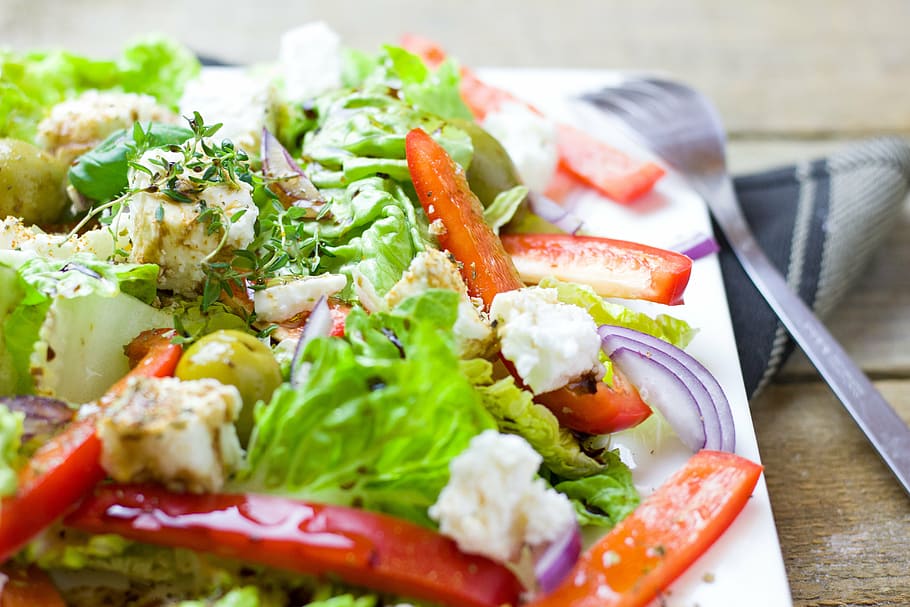Do you frequently find yourself longing for a better way to manage your weight while still being able to enjoy the foods you love? If so, low-carb eating is worth considering. A low-carb diet helps to control blood sugar levels and also can promote weight loss. To get the most out of a low-carb diet, it helps to know your food options. To get you started, let’s take a comprehensive look at all the great food choices available when it comes to low-carb eating.
1. Unpacking the Low-Carb Eating Plan
When it comes to eating a low-carb diet, it’s important to understand that not all low-carb eating plans are created equal. Different diets may emphasize different types of food, and the approach to eating needs to be tailored to the individual’s lifestyle and health goals. Here’s a breakdown of the basics of a low-carb eating plan:
- Stick to foods low in carbs: This includes most vegetables and fruits, along with lean proteins such as fish, poultry, and eggs. It’s also important to avoid foods that are high in carbohydrates, such as bread, sugar, rice, and pasta.
- Eliminate processed foods: Eating processed foods is the number one culprit in unhealthy eating. Cut out products that contain added sugar, preservatives, and artificial colors. Look for natural, organic ingredients whenever possible, and stick to whole foods.
- Include healthy fats: Don’t be afraid to get your healthy fats in on a low-carb diet. Foods such as nuts, avocados, and plant-based oils are jam-packed with beneficial monounsaturated fats and essential fatty acids.
By following these guidelines, it’s possible to create a low-carb eating plan that ensures the body gets the nutrients it needs while helping to keep carbohydrates in check. By being mindful of what goes into the body, the goal of maintaining a healthy lifestyle will be just that little bit easier.

2. A Panorama of Nutritious Low-Carb Options
Veggies
Veggies can make for great low-carb food choices that are still packed full of vital nutrients. Start things off with nutrient-dense leafy greens, such as iceberg lettuce, spinach, and kale, which are low in calories and carbs and high in vitamins, minerals, and antioxidants. Add in cruciferous vegetables, like broccoli and cauliflower, and round it out with nutrient-rich tomatoes, peppers, and cucumbers. You won’t miss the carbs when you have a bounty of veggies on hand.
Meats and Fish
Having fresh protein sources for your low-carb diet is essential. From beef and pork to chicken and turkey, there are plenty of options that are high in protein, yet have minimal carbs. Mix in the bounty of the ocean, including salmon, tuna, and mackerel, and you’ve got all the protein you need for a healthy diet. Packed with vitamins and minerals, these protein sources deliver a delicious boost to your nutrition.
Fats and Dairy
Fats and dairy are often the unsung heroes of a low-carb diet. From eggs and avocados to Greek yogurt and cheeses, these options offer plenty of healthy fat and protein, as well as other key nutrients such as vitamin A and iron. Spread some nut butter on some whole wheat toast or add some cheese to dishes for a burst of flavor. Fats and dairy can be healthy additions to any low-carb diet — just choose the right ones.
3. Carb Counts: Important Information for Meal-Planning
Meals are an essential part of our health and wellbeing, so understanding different nutrient components in a meal is essential in order to plan healthy, balanced meals. Carbohydrates, or carbs, are usually a large component of meals and can be found in many different foods, from bread and most grains, to fruits and dairy products. Knowing the carb count of different foods is key to making informed decisions about what we eat.
When planning meals, carb counts are an important piece of information to incorporate in order to ensure a balanced and healthy diet. It helps us understand how much energy, fiber, and other essential nutrients we’re getting from each food item that contribute to the overall health of a meal. Measuring our carb intake based on our weight and eating habits allows us to track our health progress over time.
How to Track:
- Be mindful of carb count when grocery shopping or ordering take-out.
- Look for nutrition labels on food and drink items.
- Have a variety of healthy low-carb alternatives on hand.
- Keep track of meals by writing down the carb counts.
By being mindful of carb counts for different food items and tracking them efficiently, we can ensure that every meal we plan is nutritious, balanced, and tasty.
4. Meat and Dairy Selections for Low-Carb Eaters
Not all low-carb eaters have to maintain a strict vegetarian/vegan diet. There are plenty of delicious recipes that involve cutting down on carbs without entirely giving up meat and dairy. Here are a few of the options available:
Beef and Lamb: These two types of red meat are great sources of protein with fewer carbs than other meats. A few dishes that low-carb eaters can try include lemon pepper beef stir-fry, curried lamb steak, and grilled beef kebabs. The leaner cuts of beef and lamb are ideal for those on a low-carb diet.
Cheeses: Not all cheese products are created equal. Many processed cheeses contain additives that skyrocket the carb count, but hard cheeses like parmesan, cheddar and mozzarella are significantly lower in carbs and can be easily incorporated in low-carb dishes. Here are some ideas to work with:
- Cheesy garlic cauliflower toast
- Greek salad with feta cheese
- Tavern-style bison burger with cheddar
5. Grains, Fruits, and Vegetables: Healthy Low-Carb Choices
Eating a healthy low-carb diet doesn’t mean missing out on the grains, fruits, and vegetables! There are plenty of creative ways to include these staples in your meal plans with delicious results that won’t break your macros. Here are a few of the best low-carb choices.
Grains:
- Barley
- Couscous
- Polenta
- Quinoa
These grains may seem like carb-heavy options in relation to your diet, however they also contain high levels of protein and fiber which help to make them some of the best carb alternatives. Consider preparing them as porridge with almond milk or using them as a base for salads.
Fruits:
- Avocado
- Berries
- Coconut
- Lemon
- Lime
Fruits are a great way to add flavor and nutrition to your low-carb meals. Berries are some of the best low-carb choices since they contain low levels of sugar and are packed with antioxidants. Coconut is also an excellent sweet treat with extra fiber to help keep you full. And the classic pairing of lemon and lime can be added to almost any dish for an extra zing!
Vegetables:
- Cabbage
- Cauliflower
- Kale
- Mushrooms
- Zucchini
Vegetables are a low-carb dieter’s best friend! From the cruciferous powerhouses of cabbage and cauliflower to the mighty mushroom, these veggies are bursting with micronutrients and will help you feel satisfied after burgers or salads. And when it comes to noodles, zucchini is a fantastic option for creating low-carb, low-calorie dishes.
6. Convenience Foods: Low-Carb Choices for Those Short on Time
When you are pressed for time, you need food that’s convenient. But how can you get the nutrients you need while still staying on a low-carb diet? Fortunately, there are many on-the-go options that don’t pack on the carbs.
Convenience foods can be just as nutritious as home-cooked meals, but it’s important to read the label. Here’s a helpful list of low-carb choices:
- Canned fruits packed in juice, not syrup
- Deli meats and pre-cooked chicken, turkey breast, and roast beef
- Salad dressings (check the labels for sugar content)
- Canned or jarred vegetables with no added sugar
- Low-carb protein bars and shakes
- Cheese with fewer than 5g of carbs per serving
- Low-carb yogurt
It’s also important to be mindful of portion sizes and calorie counts. Look for low-fat, low-carb, and low-sugar options. With a bit of knowledge, you can find convenient, nutritious options for breakfast, lunch, or dinner!
It’s clear that eating low-carb is an effective way to stay healthy and achieve desired health goals. With so many delicious and nutritious foods to choose from, it’s easy to incorporate this diet into your lifestyle for optimal health. With a solid understanding of the comprehensive low-carb food list, you can start your journey to a healthier life with ease.
